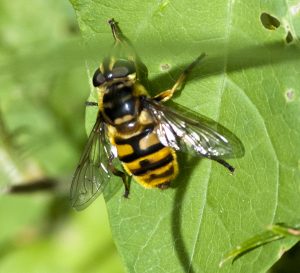woodlands web updates (1)

The woodlands blog has reported on the anthropocene - how human activity is creating a geological era characterised by human impact on the Earth. Now a report finds that human-made (artificial) material will this year surpass the sum total of all living material (biomass) on earth.
https://www.nature.com/articles/s41586-020-3010-5
A Swedish study has shown that crop yield can be enhanced by ensuring that woodland and grassland areas are present in the vicinity of crop fields. If the landscape is more diverse in terms of plants and habitats, then the number of pollinators (bees snd bumblebees) is greater.
https://www.sciencedirect.com/science/article/pii/S0167880920303753?via%3Dihub
 A paper published by the Royal Society indicates that mammals and vertebrates in general get much more funding for conservation measures than invertebrates. Despite the extinction rate of insects being significantly higher than that of birds and mammals, their funding is minuscule in comparison. Whilst much has been written about the insect apocalypse and the importance of insects in ecosystems, it would seem that smaller organisms are losing out.
A paper published by the Royal Society indicates that mammals and vertebrates in general get much more funding for conservation measures than invertebrates. Despite the extinction rate of insects being significantly higher than that of birds and mammals, their funding is minuscule in comparison. Whilst much has been written about the insect apocalypse and the importance of insects in ecosystems, it would seem that smaller organisms are losing out.
The redwoods and sequoias are magnificent trees and characteristic of the western seaboard of the United States. However, the wild fires that have burned in California this year have destroyed many of the oldest and largest trees. Many were hundreds of years old so they have survived fires in the past, but with global warming and the accumulation of dead material in the undergrowth - they fell to the intensity of the fires this year. The link below shows the areas affected and the scenes of devastation.
https://www.nytimes.com/interactive/2020/12/09/climate/redwood-sequoia-tree-fire.html
 A new variety of apple has been found in Wiltshire. It seems that it might be a cross between a cultivated variety and the ‘wild’ crab apple. When apple trees are grown from seed, they are different from each other and from their parents - due to the rearrangement of genetic material in the chromosomes. Most apple trees are created by grafting a cutting onto an existing root stock - they are therefore essentially clones. This new apple has a rather pale yellow and mottled appearance. The tree, which might be a hundred years old was found by Mr Archie Thomas, growing in a hedgerow (near some ancient woodland).
A new variety of apple has been found in Wiltshire. It seems that it might be a cross between a cultivated variety and the ‘wild’ crab apple. When apple trees are grown from seed, they are different from each other and from their parents - due to the rearrangement of genetic material in the chromosomes. Most apple trees are created by grafting a cutting onto an existing root stock - they are therefore essentially clones. This new apple has a rather pale yellow and mottled appearance. The tree, which might be a hundred years old was found by Mr Archie Thomas, growing in a hedgerow (near some ancient woodland).
https://www.theguardian.com/food/2020/nov/28/new-variety-of-apple-discovered-by-wiltshire-runner
Comments are closed for this post.
